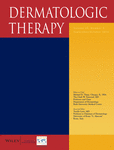A comparative study of the effectiveness of cisplatin and 5-fluorouracil on cutaneous squamous human carcinoma cell line: Potential chemotherapy alternative to surgery
Abstract
Surgery as treatment for local invasive cutaneous squamous cell carcinoma (cSCC) is not always feasible due to the age and/or the health status of patients. Thus, the investigation of new strategies to improve the quality of life of them is required. The aim of this work is to investigate two chemotherapy agents individually on cSCC cells with the purpose to provide a better understanding of the effectiveness underlying each one. The cisplatin effectiveness is compared at different times with that observed for the 5-fluorouracil treatment. The effectiveness of both was assessed by using flow cytometry to determine the survival cell ratio, and QBlue test to study the cell recovery ability after treatments. A significant increase in the number of apoptotic cells, especially 48 hours after treatments, has been detected. Despite this, cisplatin arises as the most promising agent for the treatment of local invasive cutaneous squamous cell carcinoma due to the fact that a lower concentration and time are required to observe a higher effectiveness on cells with respect to the 5-fluorouracil. An optimal cisplatin-based chemotherapy might provide a better outcome for patients affected by a local invasive cSCC rather than surgery.




